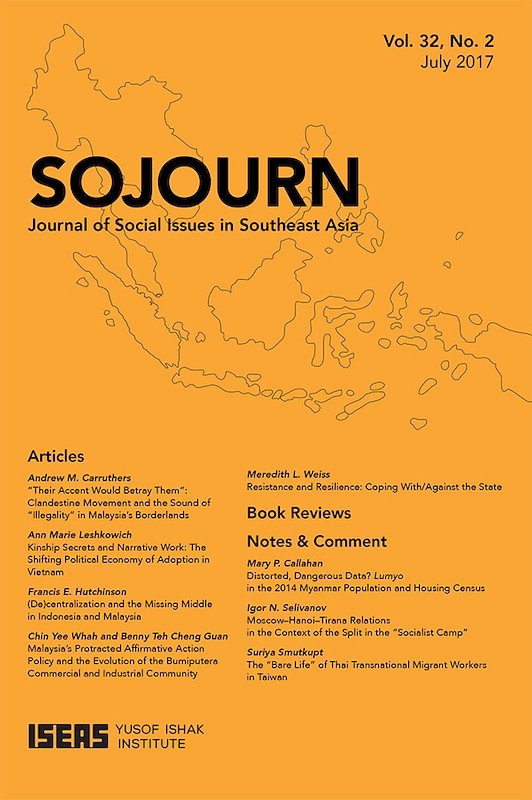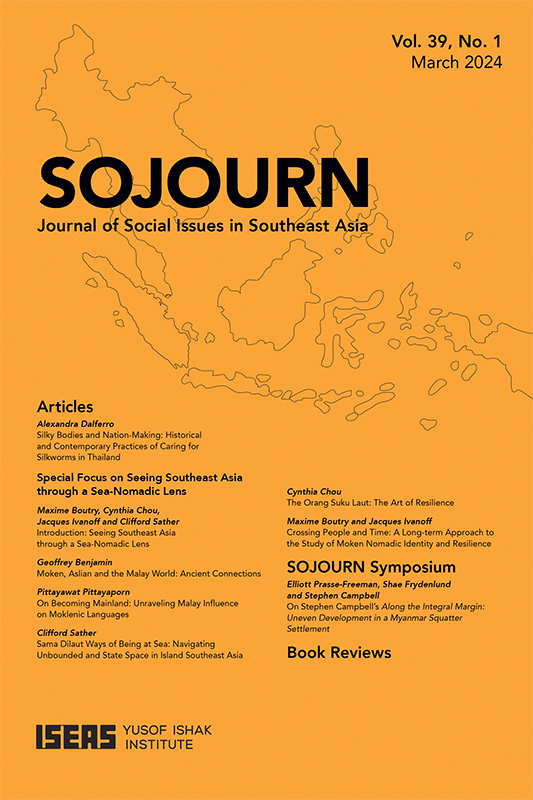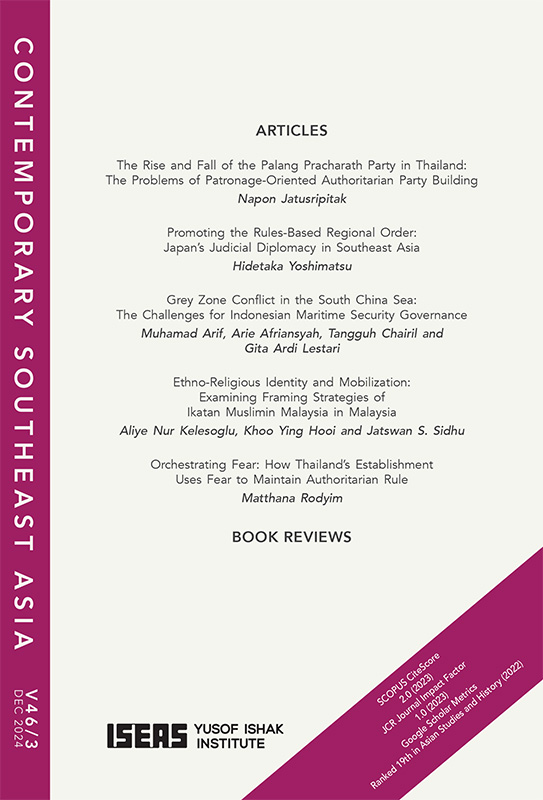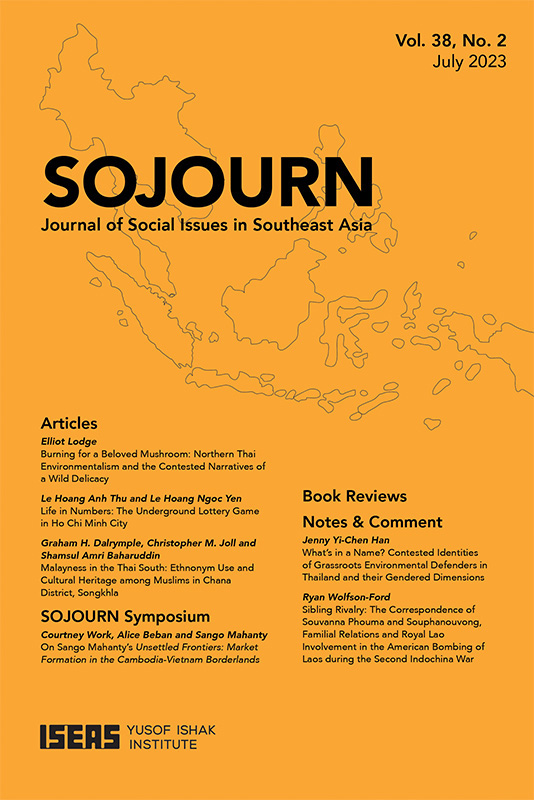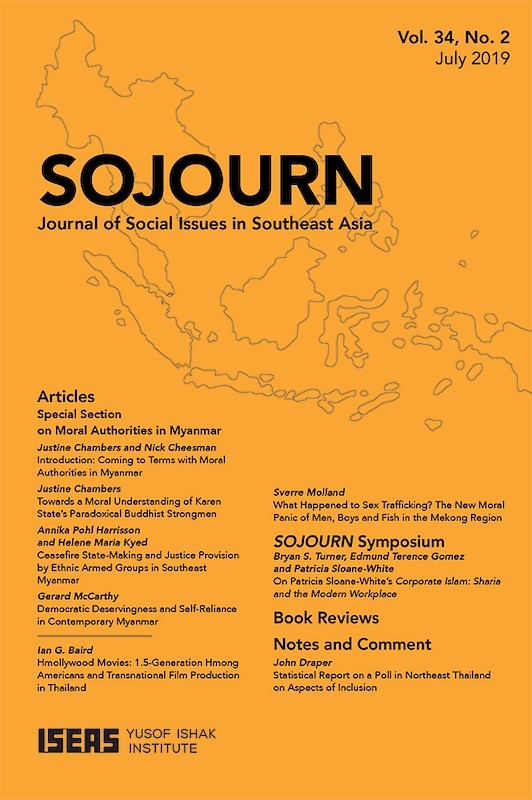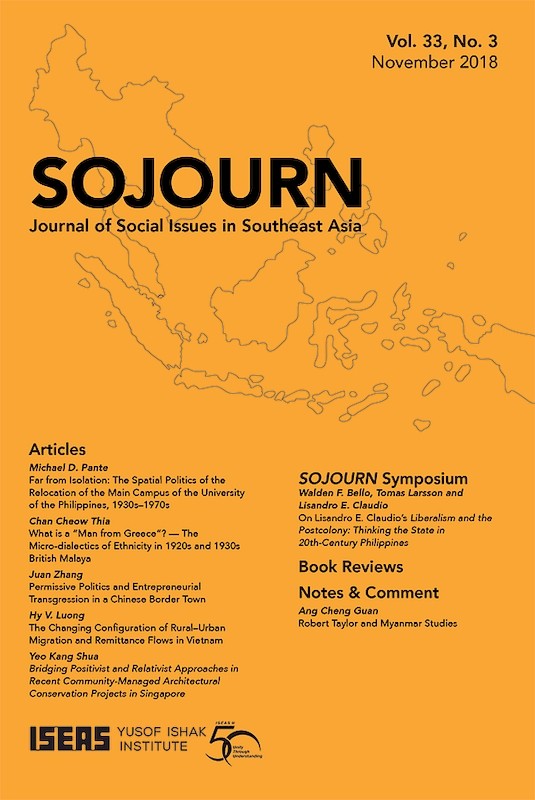SOJOURN: Journal of Social Issues in Southeast Asia Vol. 37/3 (November 2022)
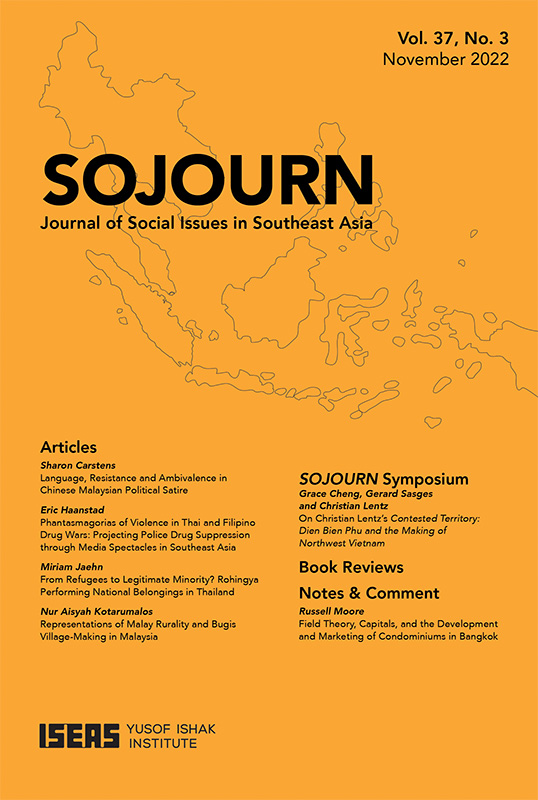
Date of publication:
November 2022
Publisher:
ISEAS – Yusof Ishak Institute
Number of pages:
173
Code:
SJ37/3
Soft Cover
ISSN: 02179520
Contents
-
SOJOURN: Journal of Social Issues in Southeast Asia Vol. 37/3 (November 2022)
[Whole Publication, ISSN: 17932858] -
Preliminary pages
- ARTICLES
-
Language, Resistance and Ambivalence in Chinese Malaysian Political Satire, by Sharon Carstens, author see abstractThe political satire of Teresa Kok’s Lunar New Year YouTube videos demonstrates creative resistance in their polylingual humorous critique of Malaysian politics. While drawing on traditions of Chinese political satire, the satirical skits employ the unique polylingual voices of Chinese Malaysians in critical performances that seek to evade censors and entertain a diverse audience. In addition to more direct political satire, the mixed languages in these skits perform hybridized Chinese Malaysian identities that suggest resistance to Malay assimilationist rhetoric. Meanwhile, these same mixed languages and the choices made between them express the diverse and sometimes ambivalent cultural and linguistic positions of contemporary Chinese Malaysians.
-
Phantasmagorias of Violence in Thai and Filipino Drug Wars: Projecting Police Drug Suppression through Media Spectacles in Southeast Asia, by Eric Haanstad, author see abstractFrom daily news displays of arrests and seizures to extrajudicial killings and drug wars, drug suppression in Thailand and the Philippines transformed private horrors into public spectacles. These spectacles relied on the narratives and imagery of popular media to project their public impact, and shared numerous operational similarities documented by Thai and Filipino scholars and journalists. Nevertheless, the extrajudicial killings of thousands of ‘criminals’ in the ongoing Philippine drug war, initially known as Oplan Double Barrel, differed from the 2003 Thai drug suppression campaign in a number of ways, including their presumed enlistment of executioners. Beyond political utility and despite logistical differences, these displays employed a remarkably similar operational mechanism of covert execution and public revelation through media narratives, statistics and imagery. This article transposes anthropological approaches to image regimes, illusory spectacle and media analysis to reveal the political utility of police operations in Southeast Asian drug wars. It argues that drug suppression in Thailand and the Philippines was reliant on visible displays that publicly converted covert police violence into political value through the projective objects of media imagery, narrative and spectacle.
-
From Refugees to Legitimate Minority? Rohingya Performing National Belongings in Thailand, by Miriam Jaehn, author see abstractRohingya living in Thailand undergo a process of de facto integration that is based on a dual performance of nationality requiring the concealment of their Rohingya ethnicity in the public sphere. This dual performance of nationality is a result of their ‘double consciousness’ in displacement and aims to legitimatize the Rohingya as a minority group in and of Thailand that has its roots in Myanmar; and on which they base their claims to a rights-based inclusion in both countries.
-
Representations of Malay Rurality and Bugis Village-Making in Malaysia, by Nur Aisyah Kotarumalos, author see abstractThe rural landscape of the Malay Peninsula has been symbolically represented as a site of Malay traditions. As such, it has been marked by the dominant image of a homogenous Malay community and the hidden presence of ‘other Malays’. This paper discusses the rural representation and village-making practices of the Bugis Malays who work to create a place-identity in the rural landscape. It argues that despite the racialization of the rural landscape, the creation of Bugis place in the rural Malay Peninsula affirms and advances the cultural dimension of Malay rurality. Drawing from sixty in-depth interviews and participant observation, this paper sheds light on the culturally distinctive imaginations of Malay rurality.
- SOJOURN SYMPOSIUM
-
On Contested Territory: Dien Bien Phu and the Making of Northwest Vietnam by Christian Lentz, by Grace Cheng, Gerard Sasges, Christian C. Lentz, authors
- BOOK REVIEWS
-
BOOK REVIEW: The Wa of Myanmar and China’s Quest for Global Dominance by Bertil Lintner, by Hongwei Fan, author
-
BOOK REVIEW: Home SOS: Gender, Violence, and Survival in Crisis Ordinary Cambodia by Katherine Brickell, by Trude Jacobsen Gidaszewski, author
-
BOOK REVIEW: Seaways and Gatekeepers: Trade and State in the Eastern Archipelagos of Southeast Asia, c.1600–1906 by Heather Sutherland, by Patricio N Abinales, author
-
BOOK REVIEW: Mandalay and the Art of Building Cities in Burma by François Tainturier, by Jérémie Sanchez, author
-
BOOK REVIEW: The Shop on High Street: At Home with Petite Capitalism by Souchou Yao, by Jayde Lin Roberts, author
-
BOOK REVIEW: Conceptualizing the Malay World: Colonialism and Pan-Malay Identity in Malaya by Naoki Soda, by Shamsul Amri Baharuddin, author
-
BOOK REVIEW: Religious Tourism in Northern Thailand: Encounters with Buddhist Monks by Brooke Schedneck, by Ploysri Porananond, author
- NOTES & COMMENT
-
Field Theory, Capitals, and the Development and Marketing of Condominiums in Bangkok, by Russell Moore, author see abstractOver the last two decades there has been a proliferation of high-rise building around mass transit stations in Bangkok, Thailand. But there is a lack of empirical research on how these new landscapes have been and are being shaped. This paper thus seeks to understand this further by exploring the interplay between the various stakeholders involved in these developments. By drawing on Bourdieu’s notions of ‘fields’ and ‘capitals’, I conceptualize the condominium market in Bangkok as a hierarchical social space in which agents operate and compete. Interviews with the property-development stakeholders reveal that the private sector is dominant in structuring space at the expense of the state, and it maintains this dominance by deploying a variety of capital. Developers’ practices can be seen as dynamic in nature as they adapt to the differing demands and realities of the specific contexts in which they operate.

